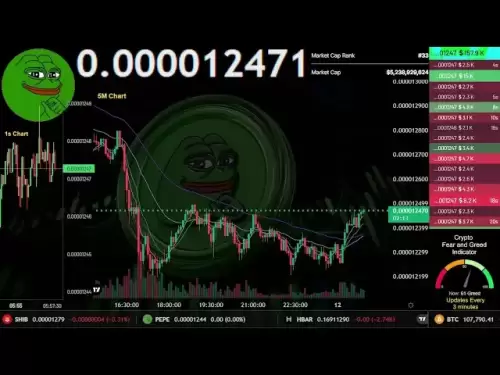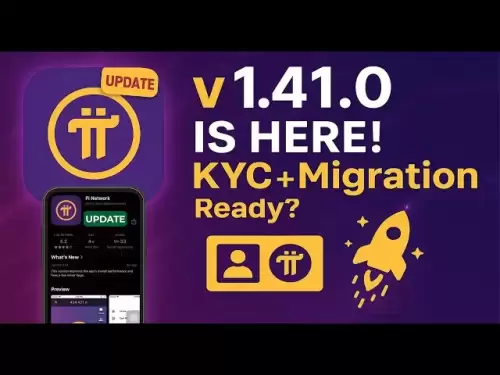-
 Bitcoin
Bitcoin $106,957.1091
-1.94% -
 Ethereum
Ethereum $2,723.6537
-1.49% -
 Tether USDt
Tether USDt $1.0000
0.00% -
 XRP
XRP $2.2251
-3.63% -
 BNB
BNB $661.9038
-0.66% -
 Solana
Solana $157.9386
-3.64% -
 USDC
USDC $0.9996
-0.01% -
 Dogecoin
Dogecoin $0.1873
-5.74% -
 TRON
TRON $0.2714
-6.79% -
 Cardano
Cardano $0.6778
-4.93% -
 Hyperliquid
Hyperliquid $40.5108
-1.74% -
 Sui
Sui $3.2555
-5.65% -
 Chainlink
Chainlink $14.1277
-6.69% -
 Avalanche
Avalanche $20.8372
-5.05% -
 Stellar
Stellar $0.2733
-2.52% -
 Bitcoin Cash
Bitcoin Cash $427.3769
-3.45% -
 UNUS SED LEO
UNUS SED LEO $8.8732
-1.25% -
 Toncoin
Toncoin $3.1618
-1.92% -
 Shiba Inu
Shiba Inu $0.0...01256
-4.56% -
 Hedera
Hedera $0.1667
-6.79% -
 Litecoin
Litecoin $88.3449
-2.97% -
 Polkadot
Polkadot $4.0213
-4.76% -
 Monero
Monero $322.4480
-3.10% -
 Ethena USDe
Ethena USDe $1.0005
0.00% -
 Bitget Token
Bitget Token $4.6890
-3.41% -
 Dai
Dai $0.9998
0.00% -
 Pepe
Pepe $0.0...01216
-4.28% -
 Uniswap
Uniswap $7.7968
-4.75% -
 Pi
Pi $0.6264
-1.41% -
 Aave
Aave $292.6275
-5.31%
Technical Analysis of Crypto K-line Charts: A Comprehensive Analysis from Basic to Advanced
K-line charts are vital for crypto trading, revealing price action through patterns like hammers, dojis, and engulfing candles, best used with indicators like RSI and volume for confirmation.
Jun 11, 2025 at 02:50 am
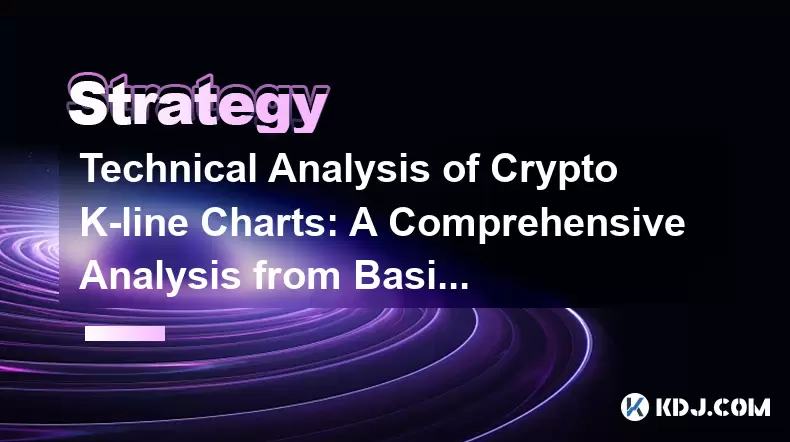
Understanding the Basics of K-line Charts
K-line charts, also known as candlestick charts, are essential tools in the technical analysis of cryptocurrency markets. Each candlestick represents a specific time period and provides four key data points: open, high, low, and close prices. These elements allow traders to interpret market sentiment and potential price movements.
The body of the candlestick shows the range between the open and close. If the close is higher than the open, the body is typically green or hollow; if it's lower, the body appears red or filled. The lines above and below the body, called wicks or shadows, indicate the highest and lowest prices reached during that time frame.
Key Point: Understanding how to read these patterns helps identify reversal signals, continuation trends, and market indecision.
Common Candlestick Patterns in Crypto Trading
Certain candlestick patterns appear frequently in crypto trading and can provide valuable insights into market behavior. One such pattern is the hammer, which usually indicates a potential reversal from a downtrend. It has a small body at the top with a long lower wick.
Another widely recognized formation is the engulfing pattern, where a large bullish or bearish candle completely engulfs the previous candle. This often signals strong momentum in the direction of the engulfing candle.
The doji is another crucial pattern, reflecting market indecision. It forms when the open and close prices are nearly equal, creating a cross-like shape. When this occurs after a significant trend, it may suggest an impending reversal.
- Hammer: Bullish reversal signal after a downtrend
- Shooting Star: Bearish reversal indicator after an uptrend
- Doji: Market uncertainty, potential reversal
How to Combine K-lines with Technical Indicators
Relying solely on K-line patterns can be misleading without confirming signals from other technical indicators. Traders often combine candlestick analysis with tools like Moving Averages (MA), Relative Strength Index (RSI), and Bollinger Bands to increase accuracy.
For example, a bullish engulfing pattern appearing near a key support level while the RSI is in oversold territory (<30) strengthens the probability of a successful trade. Similarly, a shooting star forming at resistance with RSI above 70 suggests a stronger bearish setup.
Important Tip: Always wait for confirmation before entering a trade based on K-line signals alone.
- RSI: Confirm overbought/oversold conditions alongside candlestick patterns
- Moving Averages: Use them as dynamic support/resistance zones
- Volume: High volume during pattern formation increases reliability
Advanced K-line Chart Reading Techniques
Experienced traders use more advanced techniques such as price action zones, multi-timeframe analysis, and confluence zones to enhance their decision-making process. These methods involve analyzing K-lines across different timeframes—such as 1-hour, 4-hour, and daily charts—to find alignment in trend direction.
A confluence zone occurs when multiple technical factors align, such as a key Fibonacci level coinciding with a major candlestick reversal pattern. This increases the likelihood of a successful trade.
Traders also pay attention to wick rejection, where long upper or lower wicks indicate rejection of certain price levels. For instance, repeated rejections at a resistance level with bearish candles suggest a possible breakdown.
- Multi-Timeframe Analysis: Look for alignment across different chart intervals
- Confluence Zones: Combine candlestick patterns with Fibonacci or moving averages
- Wick Rejection: Strong indication of support/resistance strength
Practical Steps to Analyze K-line Charts Effectively
To begin analyzing K-line charts effectively, follow these practical steps:
- Select a Reliable Charting Platform: Use platforms like TradingView or Binance’s native tools
- Identify Key Support and Resistance Levels: Draw horizontal lines where price has historically reacted
- Spot Candlestick Patterns: Look for recognizable formations at critical price zones
- Apply Technical Indicators: Overlay RSI, MA, and volume indicators for confirmation
- Wait for Confirmation Candles: Ensure the pattern completes and is supported by volume
It’s also important to backtest strategies using historical data to understand how they perform under various market conditions. Many traders keep a trading journal to record their observations and refine their approach over time.
Note: Discipline and consistency are vital when interpreting K-line charts. Avoid impulsive decisions based on isolated candlestick signals.
Frequently Asked Questions
Q1: Can K-line charts be used for all cryptocurrencies?
Yes, K-line charts are universally applicable to any tradable asset, including all cryptocurrencies. The interpretation remains consistent regardless of the digital currency being analyzed.
Q2: Are K-line patterns reliable in volatile crypto markets?
While K-line patterns are useful, volatility can sometimes lead to false signals. It’s advisable to combine them with other indicators and analyze multiple timeframes for better accuracy.
Q3: What timeframes are best for reading K-line charts in crypto?
Short-term traders often use 5-minute to 1-hour charts, while swing traders prefer 4-hour to daily charts. The choice depends on individual trading strategies and goals.
Q4: Do professional crypto traders rely heavily on K-line charts?
Many professional traders incorporate K-line charts into their analysis but typically use them alongside other tools such as order flow analysis, volume profiles, and macroeconomic indicators.
Disclaimer:info@kdj.com
The information provided is not trading advice. kdj.com does not assume any responsibility for any investments made based on the information provided in this article. Cryptocurrencies are highly volatile and it is highly recommended that you invest with caution after thorough research!
If you believe that the content used on this website infringes your copyright, please contact us immediately (info@kdj.com) and we will delete it promptly.
- A Leveraged Trader Who Doubled Down on Their Ethereum ETH/USD Short Bet on Wednesday Was Sitting on Unrealized Profits
- 2025-06-12 19:50:14
- Pepeto (PEPETO) Coin Price Prediction: Will Pepeto Flip Pepe (PEPE) and Become the New King of Frogs?
- 2025-06-12 19:50:14
- Crypto Casinos Are the Future of Online Gambling
- 2025-06-12 19:50:12
- Chainlink (LINK) Surpasses Ethereum (ETH) in Development Activity, Outpaces ETH by Recording 7.7% Growth Versus ETH's 6.3%
- 2025-06-12 19:50:12
- AVAX (AVAX) Has Emerged as a Strong Performer in the Cryptocurrency Market
- 2025-06-12 19:45:12
- New coin dedicated to Liepāja will be presented on the coin release day, 17th of June
- 2025-06-12 19:45:12
Related knowledge

Cryptocurrency K-line chart technical analysis manual: Learn these methods to increase your chances of making a profit
Jun 11,2025 at 11:21pm
Understanding the Basics of K-line ChartsK-line charts, also known as candlestick charts, are one of the most widely used tools in cryptocurrency trading. Each K-line represents a specific time period and provides information about the open, high, low, and close prices during that interval. The body of the candle shows the relationship between the openi...
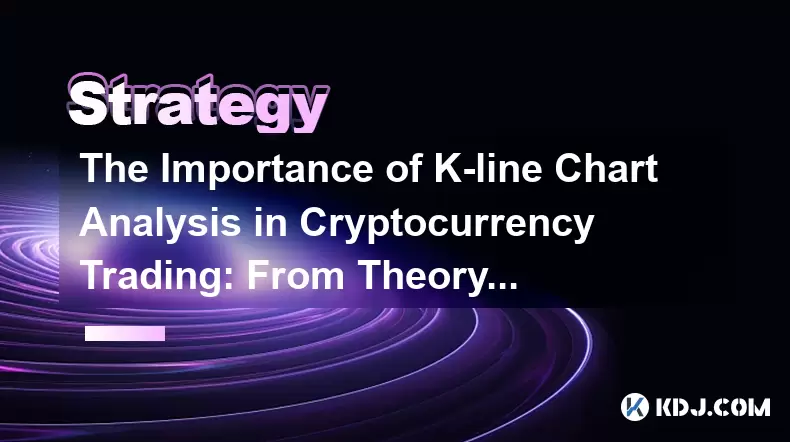
The Importance of K-line Chart Analysis in Cryptocurrency Trading: From Theory to Practical Cases
Jun 11,2025 at 04:56pm
Understanding the Basics of K-line ChartsK-line charts, also known as candlestick charts, are a visual representation of price movements over specific time intervals. Each K-line encapsulates four critical data points: the opening price, closing price, highest price, and lowest price within a given timeframe. These charts originated in Japan during the ...
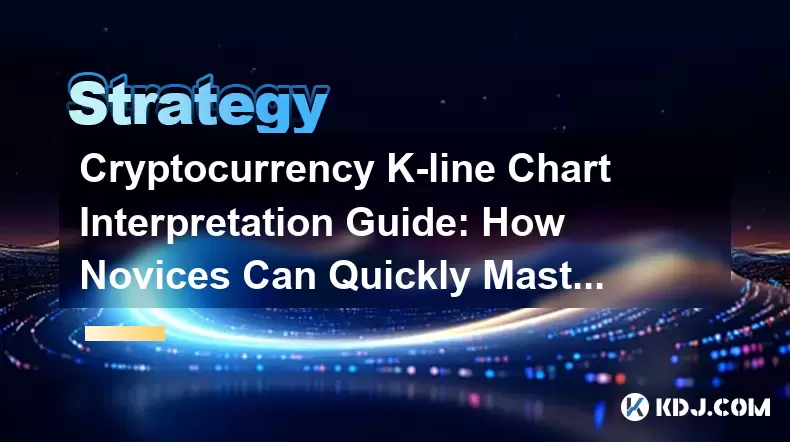
Cryptocurrency K-line Chart Interpretation Guide: How Novices Can Quickly Master the Basics of Technical Analysis
Jun 10,2025 at 08:56pm
Understanding the Basics of K-line ChartsK-line charts, also known as candlestick charts, are one of the most widely used tools in cryptocurrency trading for analyzing price movements. Each K-line represents a specific time period and shows the opening, closing, high, and low prices during that interval. For novices, grasping how to read these elements ...
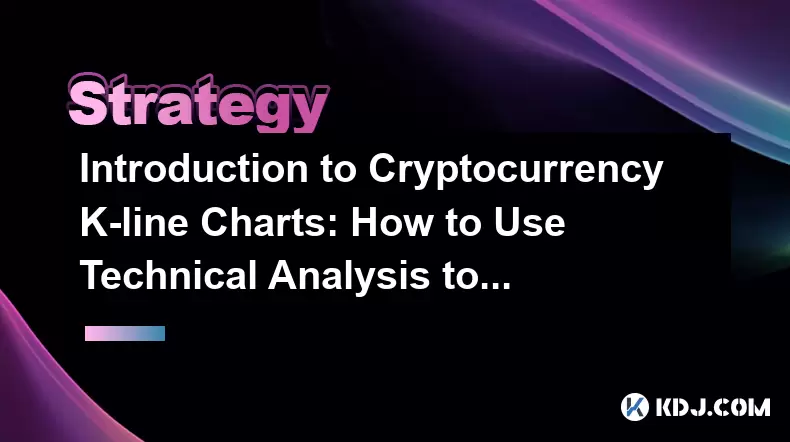
Introduction to Cryptocurrency K-line Charts: How to Use Technical Analysis to Optimize Trading Decisions
Jun 12,2025 at 03:56pm
Understanding the Basics of K-line ChartsK-line charts, also known as candlestick charts, are one of the most essential tools used in cryptocurrency trading. Originating from Japan, these charts visually represent price movements over specific time intervals. Each candlestick displays four key pieces of information: the opening price, closing price, hig...
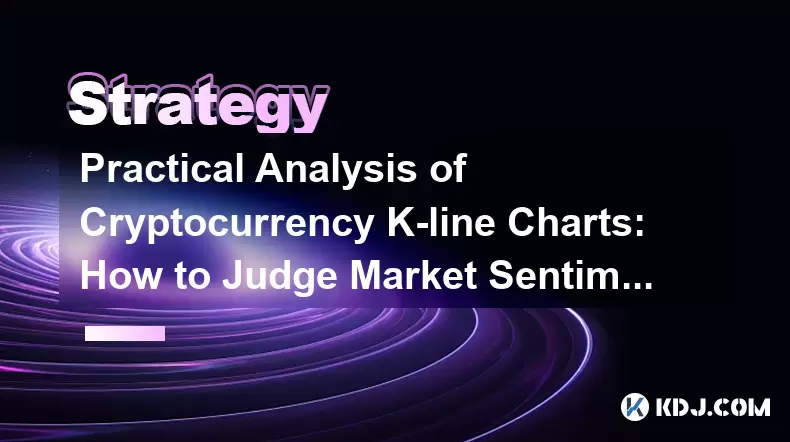
Practical Analysis of Cryptocurrency K-line Charts: How to Judge Market Sentiment through Charts
Jun 10,2025 at 09:42pm
Understanding the Basics of Cryptocurrency K-line ChartsCryptocurrency K-line charts, also known as candlestick charts, are essential tools for analyzing price movements in the crypto market. Each candlestick represents a specific time frame, such as 1 minute, 5 minutes, or even daily intervals. The structure of a K-line includes four key data points: o...
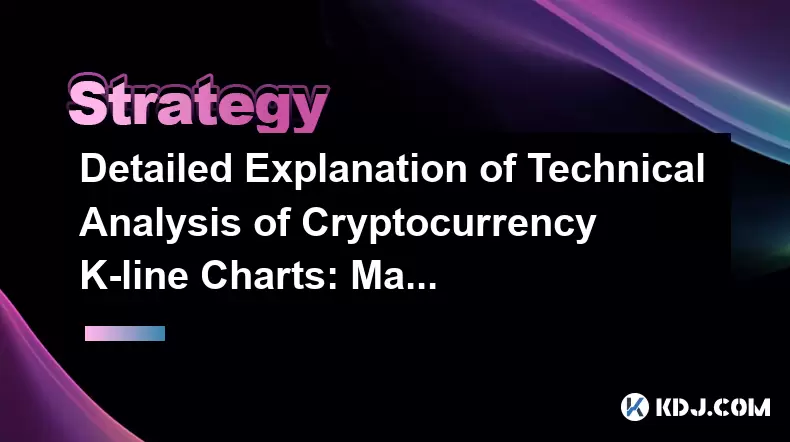
Detailed Explanation of Technical Analysis of Cryptocurrency K-line Charts: Master These Tools to Improve Trading Efficiency
Jun 12,2025 at 02:43am
Understanding Cryptocurrency K-line ChartsCryptocurrency K-line charts, also known as candlestick charts, are essential tools for traders aiming to interpret market behavior and make informed decisions. Each K-line represents a specific time period—such as 1 minute, 5 minutes, or 1 day—and displays the open, high, low, and close prices during that inter...

Cryptocurrency K-line chart technical analysis manual: Learn these methods to increase your chances of making a profit
Jun 11,2025 at 11:21pm
Understanding the Basics of K-line ChartsK-line charts, also known as candlestick charts, are one of the most widely used tools in cryptocurrency trading. Each K-line represents a specific time period and provides information about the open, high, low, and close prices during that interval. The body of the candle shows the relationship between the openi...

The Importance of K-line Chart Analysis in Cryptocurrency Trading: From Theory to Practical Cases
Jun 11,2025 at 04:56pm
Understanding the Basics of K-line ChartsK-line charts, also known as candlestick charts, are a visual representation of price movements over specific time intervals. Each K-line encapsulates four critical data points: the opening price, closing price, highest price, and lowest price within a given timeframe. These charts originated in Japan during the ...

Cryptocurrency K-line Chart Interpretation Guide: How Novices Can Quickly Master the Basics of Technical Analysis
Jun 10,2025 at 08:56pm
Understanding the Basics of K-line ChartsK-line charts, also known as candlestick charts, are one of the most widely used tools in cryptocurrency trading for analyzing price movements. Each K-line represents a specific time period and shows the opening, closing, high, and low prices during that interval. For novices, grasping how to read these elements ...

Introduction to Cryptocurrency K-line Charts: How to Use Technical Analysis to Optimize Trading Decisions
Jun 12,2025 at 03:56pm
Understanding the Basics of K-line ChartsK-line charts, also known as candlestick charts, are one of the most essential tools used in cryptocurrency trading. Originating from Japan, these charts visually represent price movements over specific time intervals. Each candlestick displays four key pieces of information: the opening price, closing price, hig...

Practical Analysis of Cryptocurrency K-line Charts: How to Judge Market Sentiment through Charts
Jun 10,2025 at 09:42pm
Understanding the Basics of Cryptocurrency K-line ChartsCryptocurrency K-line charts, also known as candlestick charts, are essential tools for analyzing price movements in the crypto market. Each candlestick represents a specific time frame, such as 1 minute, 5 minutes, or even daily intervals. The structure of a K-line includes four key data points: o...

Detailed Explanation of Technical Analysis of Cryptocurrency K-line Charts: Master These Tools to Improve Trading Efficiency
Jun 12,2025 at 02:43am
Understanding Cryptocurrency K-line ChartsCryptocurrency K-line charts, also known as candlestick charts, are essential tools for traders aiming to interpret market behavior and make informed decisions. Each K-line represents a specific time period—such as 1 minute, 5 minutes, or 1 day—and displays the open, high, low, and close prices during that inter...
See all articles





















